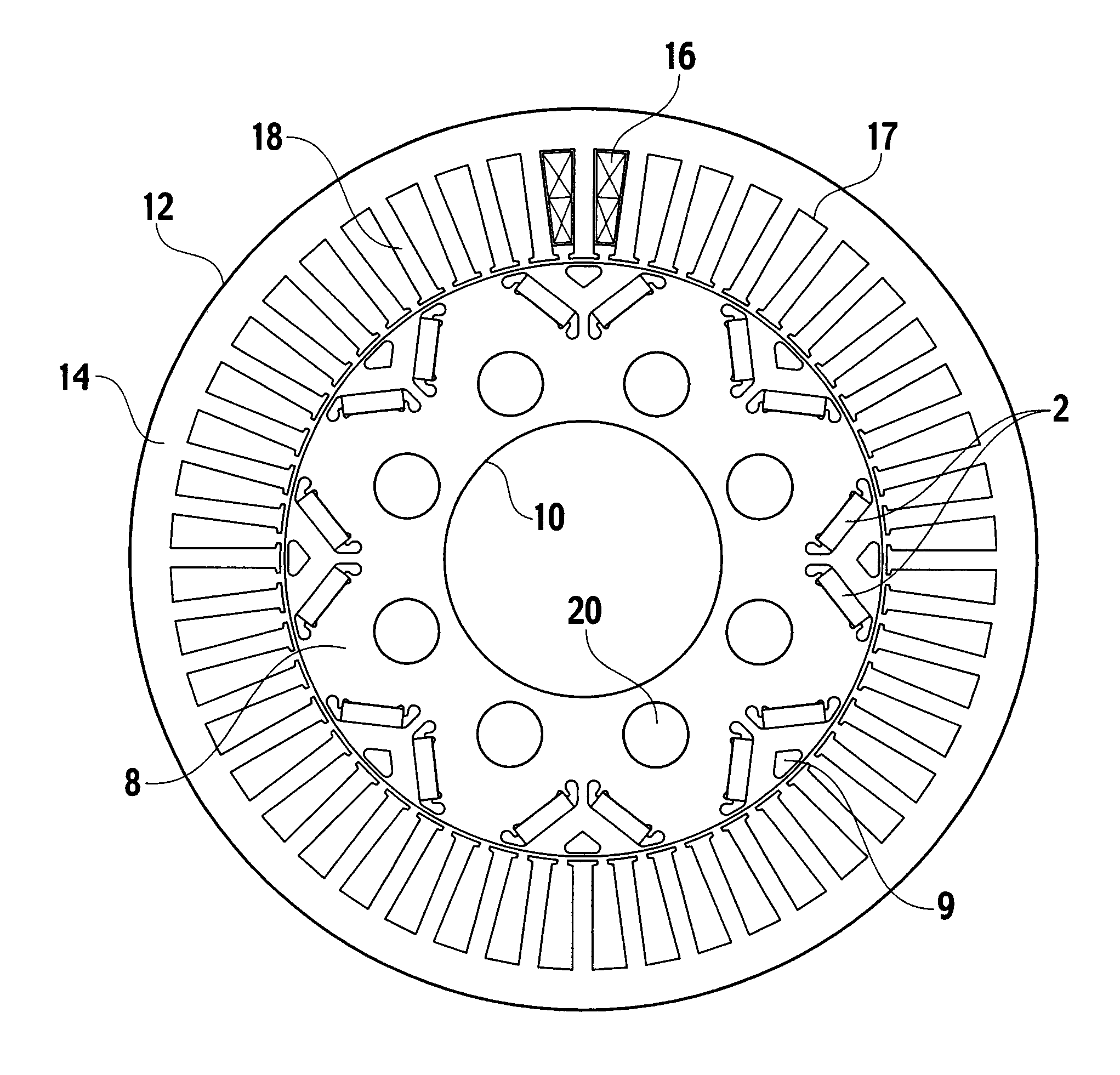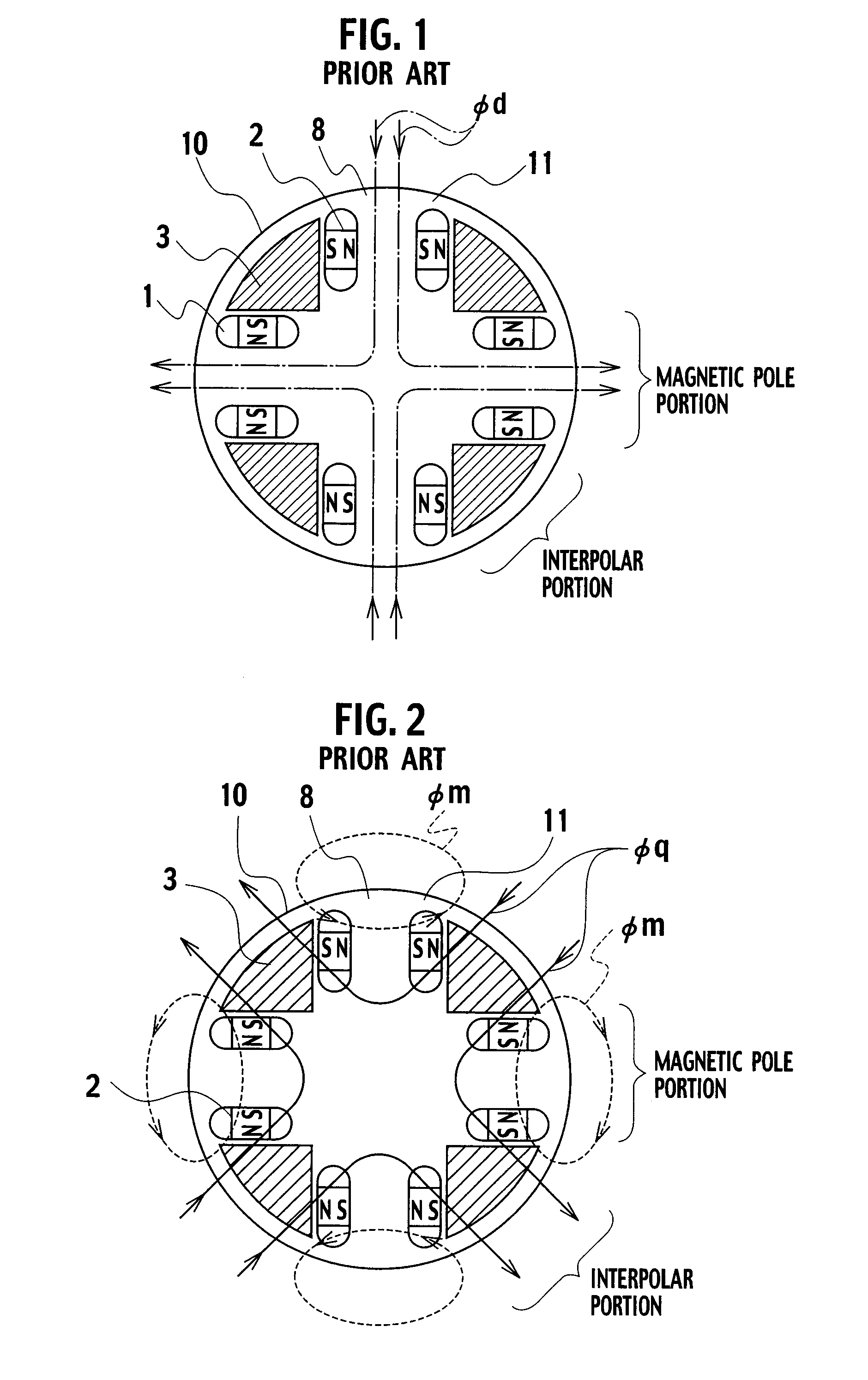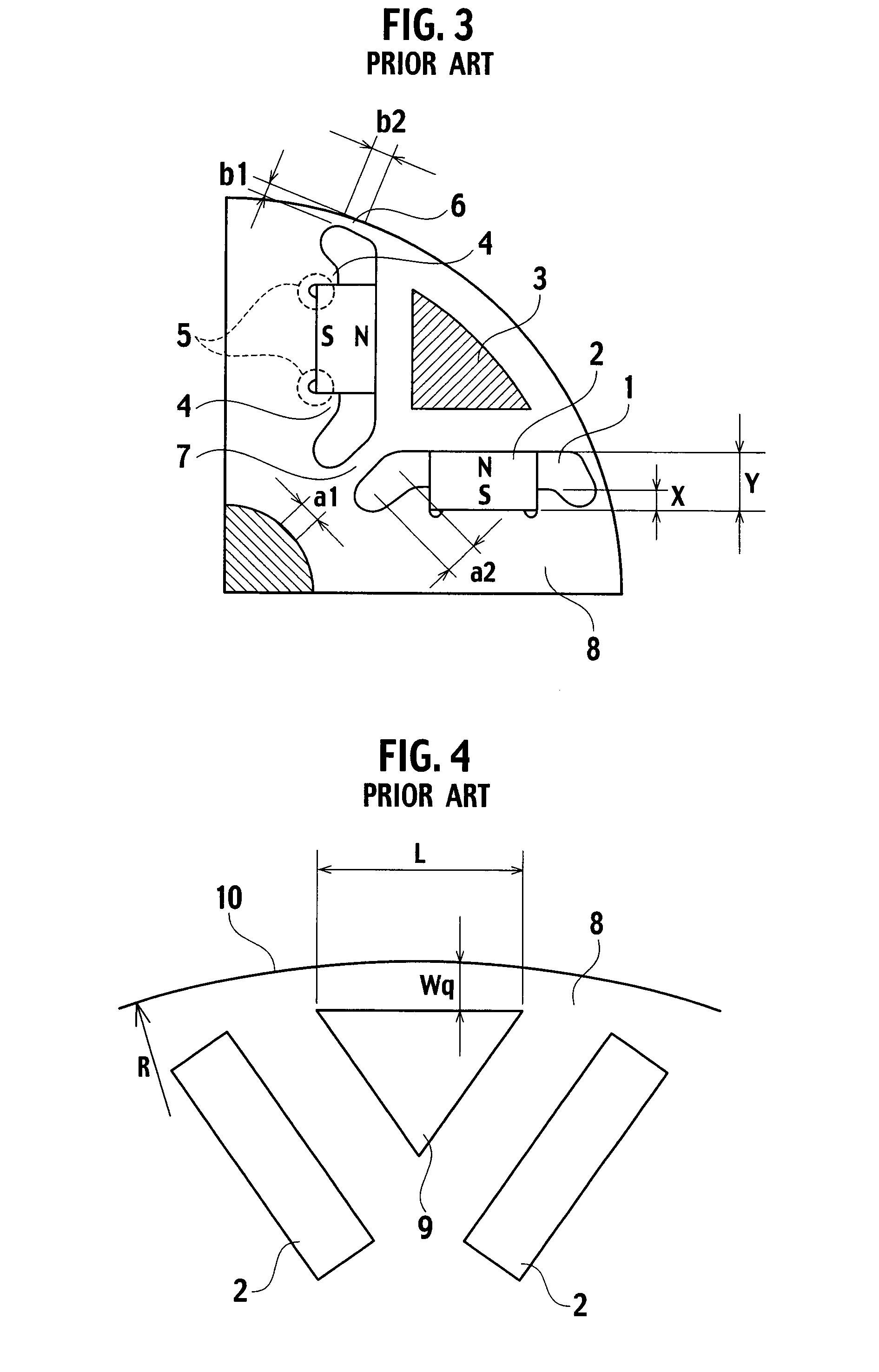Permanent-magnet reluctance electrical rotary machine
a permanent magnet and electrical rotary machine technology, applied in the direction of dynamo-electric machines, magnetic circuit rotating parts, magnetic circuit shape/form/construction, etc., can solve the problems of harmonic loss, increase in iron loss, and significant reduction in efficiency, and achieve the effect of reducing the number of rotary machines
- Summary
- Abstract
- Description
- Claims
- Application Information
AI Technical Summary
Benefits of technology
Problems solved by technology
Method used
Image
Examples
first embodiment
[0044]Description is now made of a first embodiment of the present invention. FIG. 5 is a diametrical sectional view of a permanent-magnet reluctance electrical rotary machine according to the first embodiment, and FIG. 6, an enlarged diametrical sectional view of the permanent-magnet reluctance electrical rotary machine according to the first embodiment. Like or equivalent elements to FIG. 1 to FIG. 4 are designated by like reference characters, eliminating redundancy.
[0045]Description is now made of configuration of the present embodiment. A stator 12 has a stator core 14 and a combination of armature windings 16. The stator core 14 is made up by laminations of magnetic steel sheets, and has at their inner circumferential sides a set of stator slots 17 for accommodating armature windings 16, and a set of stator teeth 18 fronting a rotor 10. The stator slots are forty-eight in total. The rotor 10, installed inside the stator 12, has a rotor core 8, a plurality of permanent magnets ...
second embodiment
[0061]Description is now made of a second embodiment of the present invention. FIG. 10 is an enlarged diametrical sectional view of a permanent-magnet reluctance electrical rotary machine according to the second embodiment. Like or equivalent elements to FIG. 5 or FIG. 6 are designated by like reference characters, eliminating redundancy.
[0062]For basic configuration, the second embodiment is identical to the first embodiment. A magnet angle α is now defined as an open angle made by an axial center of a rotor and vertexes of corners at rotor outer-circumferential sides of two permanent magnets 2 arranged in a V-form. The magnets 2 are arranged so as to meet a relationship by which the magnet angle α is set within a range of 82 degrees or more and 92 degrees or less in terms of an electric angle.
[0063]The electric angle is defined relative to an angle between N pole and S pole neighboring each other to be electrical π [rad]. Letting P be a pole number, the electric angle has a value ...
PUM
 Login to View More
Login to View More Abstract
Description
Claims
Application Information
 Login to View More
Login to View More - R&D
- Intellectual Property
- Life Sciences
- Materials
- Tech Scout
- Unparalleled Data Quality
- Higher Quality Content
- 60% Fewer Hallucinations
Browse by: Latest US Patents, China's latest patents, Technical Efficacy Thesaurus, Application Domain, Technology Topic, Popular Technical Reports.
© 2025 PatSnap. All rights reserved.Legal|Privacy policy|Modern Slavery Act Transparency Statement|Sitemap|About US| Contact US: help@patsnap.com



